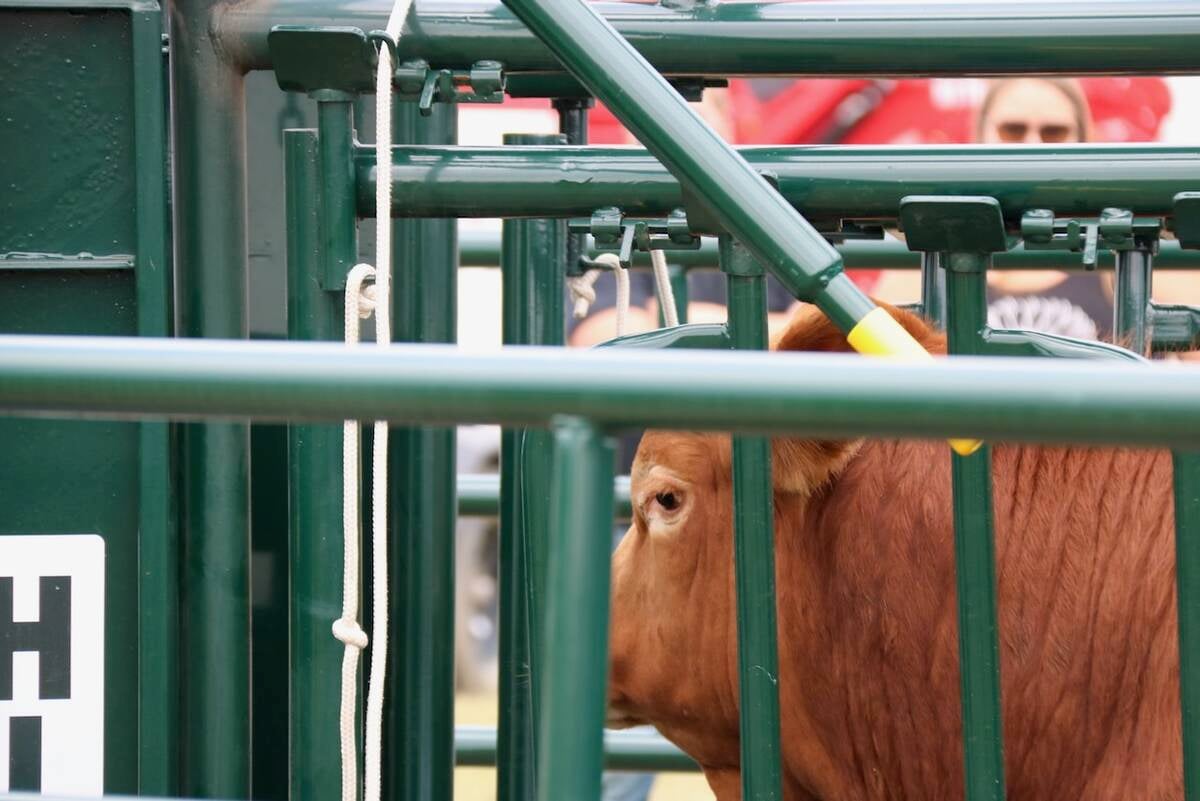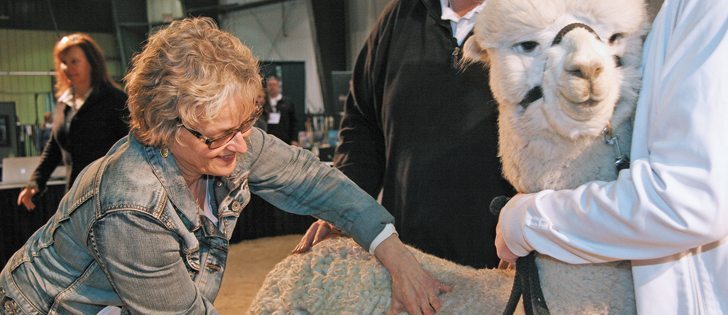RED DEER —Through thick and thin, some alternative livestock breeds have withstood the test of time.
Alpacas have been among the survivors.
“A lot of exotics don’t make it, and I think alpacas themselves have held the industry together,” said Debbie Bruynooghe of North Battleford, Sask.
She got into the business 10 years ago and has 40 animals on the farm she calls Spellbound Alpacas.
She also found herself in an industry that was competitive but friendly.
Owning cute and cuddly animals was an added benefit, she said during the National Alpaca Futurity Show and Sale in Red Deer, April 9.
Read Also

Good handling equipment a must on cattle operations
It’s important for the safety of producers and everyone else dealing with their stock that handling equipment is functional and safe.
“The alpaca industry is really unique with the camaraderie alongside the competitiveness, and so you form really good relationships with other breeders and you work together to support the industry,” she said.
A buying frenzy to get in on the ground floor often broke out when many alternative livestock species entered Canada. Small fortunes were paid for animals, but few had a plan for the commercial side of the business.
Alpacas came to Canada in the late 1980s from South America. A large group of more than 350 arrived in the early 1990s from South America via New Zealand, where they were first held in quarantine.
The end game for alpacas is finding a market for the fleece, which is a high end natural fibre.
Most of the original animals were white, but today they come in 22 colours from pure white to true black.
Many breeders have on-farm stores or find other local markets, but volume is needed to publicize the product and earn a profit.
Three Saskatchewan breeders who are also master fibre workers decided to form a new company and buy fleece from Canadian breeders on a per pound basis, get it processed and then sell it through retail outlets.
About 18 months ago, Cathy Newby of Dinsmore, Cathy Merkley of Lloydminster and Lynn Hilderman formed Alpaca Naturally.
Merkley and Hilderman are certified judges and classers. They sort the fleece into six classes based on quality. Grades one and two fibre are worth $10 per pound. Grade six fleece is worth about $4 per lb.
They look at the colour, overall quality and micron count.
A micron is a measurement of the diameter of each fibre. The lower the number, the finer the product. The fibre is handled similarly to wool, but it does not contain lanolin and the scale surface is different so it feels softer.
“We are about the commercial industry. We wanted to be repeatable, we want to be sustainable and we want the quality to be the same, year after year,” said Newby.
There are two main spinning mills: Custom Wool Mills at Carstairs, Alta., and Masters Mills in Ontario.
Yarn comes in natural and dyed skeins and may be further processed into socks, hats, mitts, shawls and other garments. It may be knitted, woven or felted.
“So far we have been able to source all Canadian manufacturers. We prefer to stay home,” she said.
All three women have been in the business at least 20 years and saw that the next step had to be value added. Past attempts to build a commercial industry faltered.
“We were ahead of our time,” Newby said.
The company is new, but they are covering expenses at this point and are sure there is a profit to be made as the products get into more retail stores.
They attend as many shows and sales as possible to promote the company and hope to be part of the world show to be held in Leduc, Alta., next August.
More than 150 animals were registered for the futurity event at the national show and sale held April 8-9 in Red Deer. The sale offered 24 young males and females.
The top seller came from Rick and Evelyn Derksen of High Plains Alpacas of Saskatoon. They sold a pure white female born in 2014 for $9,250.
Another high seller came from Tom Vanhanen and Lori Jones, owners of Arriba Alpacas in Uxbridge, Ont. They sold a bay coloured female born in 2014 for $7,000 to Sun Star Alpacas in Germany.
The most recent census information in 2011 said there were 4,100 farms and 31,500 llamas and alpacas. Statistics Canada does not separate the llama and alpaca population.
















